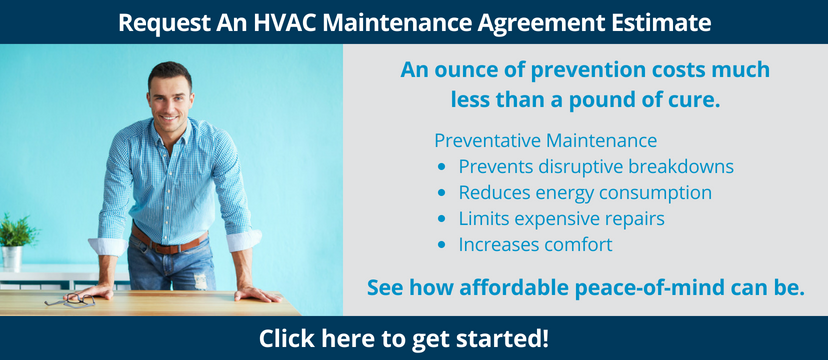As we’ve talked about in our blogs all this month, heat pump technology has evolved to the point where heat pumps are growing in popularity in colder climates, like here in the northeast. You might even be considering a heat pump yourself, to:
- Supplement another system, such radiant floor heating
- Replace your existing heating and cooling systems with one unified solution
- Increase your energy efficiency and reduce your carbon footprint
- Lower your ongoing energy costs — plus, take advantage of the heat pump tax credit.
If the combination of heating and cooling in a single system has you concerned about the complexity of heat pump maintenance, don’t worry.
This week we’re here to answer some frequently asked questions and offer some heat pump maintenance tips to set your mind at ease.
Do heat pumps need servicing?
As with any heating or cooling system, a heat pump benefits from routine preventative maintenance. For example, according to energy.gov, the difference in energy consumption between a well-maintained heat pump and a neglected one ranges from 10% to 25%.
Routine heat pump maintenance helps keep the system performing efficiently. It also helps prevent damage to the compressor and other components, to protect your heating and cooling investment.
So in addition to maintaining heat pump system reliability, routine service reduces the risk of unexpected (and potentially costly) repairs.
How much does heat pump maintenance cost?
As you might expect, the cost of heat pump maintenance will vary greatly depending on the provider, where you are located, the age and complexity of your system, and how often service is performed.
However, for the sake of understanding why heat pump maintenance is worth the investment, look at the differences between the costs for heat pump maintenance service (a preventative measure) and heat pump repair (fixing malfunctioning equipment).
According to HomeAdvisor, the national average cost for residential heat pump repair is $347, but can easily run to $1,250 or more.
Compare that with the cost of a preventative heat pump service visit, which averages $170 to $190, and it’s clear that routine maintenance is not only smart but also cost-effective. In addition, you can often save on routine service with a maintenance contract from your HVAC provider.
Can I troubleshoot and maintain a heat pump myself?
Without a doubt, you can and should monitor your heat pump for some common issues, to prevent problems down the road.
For instance, the defrost cycle is a normal part of heat pump operation when it is very cold outside. But if you notice the defrost mode is coming on more frequently or lasting longer than 15 minutes at a time, you may need to call in an HVAC technician to check that everything is working properly.
You can read more about it in our blog Heat Pump Troubleshooting: 3 Common Problems and Solutions.
In addition, you can help keep your heat pump running efficiently by doing routine tasks such as dusting around vents and regularly replacing system air filters. (More on this below.)
However, the reality is heat pump preventative maintenance is definitely NOT a DIY job. If you are not properly trained and experienced, working high voltage electricity and refrigerant chemicals is extremely dangerous. And you can also end up doing your system more harm than good. That’s why you should always turn to an HVAC professional for routine maintenance service.
How often should a heat pump be serviced?
You should schedule heat pump maintenance with an HVAC professional at least once a year.
If your heat pump is your primary heating and cooling system rather than a supplemental system, you might want to schedule maintenance twice a year — in the fall and spring.
What are some DIY maintenance tips?
There are some things you can do yourself to help keep a heat pump in good working condition:
- Replace or clean air filters every 30 to 60 days
- Keep the outdoor unit free of grass, leaves, dirt, snow, and other debris
- Maintain a 2-foot area of clearance around the heat pump
- Dust the supply and return registers to keep the vents open and the air flowing
- Call your HVAC pro once or twice a year to schedule heat pump maintenance!
HVAC professional heat pump maintenance checklist
For routine preventative maintenance on your heat pump, look for a professional HVAC technician to perform the following tasks:
- Inspect the ducts, filters, blower, and indoor coil for dirt, obstructions, or damage
- Clean the indoor coil and drain pan
- Flush and clean the drain line
- Diagnose and seal any leaks in the ducts
- Check line and system discharge pressure
- Measure and verify the refrigerant charge
- Check for and repair any refrigerant leaks
- Initiate a defrost cycle and check for the proper sequence
- Inspect electrical wiring, replace damaged wire, and clean and tighten connections as needed
- Check the blower wheel for balance and cleanliness
- Inspect and lubricate motors and bearings as needed
- Inspect belts for tightness and wear
- Verify correct electric controls — i.e., determine that heating is locked out when the thermostat calls for cooling, and vice versa
- Test thermostat operation
- Inspect the outdoor condensing unit and base-pan for balance and cleanliness.
- Verify that outdoor temperature sensors are properly situated
A well-maintained heating and cooling system is critical to comfort, energy efficiency, and cost-effectiveness. By scheduling professional heat pump maintenance at least once a year, you can be sure your system is optimized for the heating and cooling seasons.


